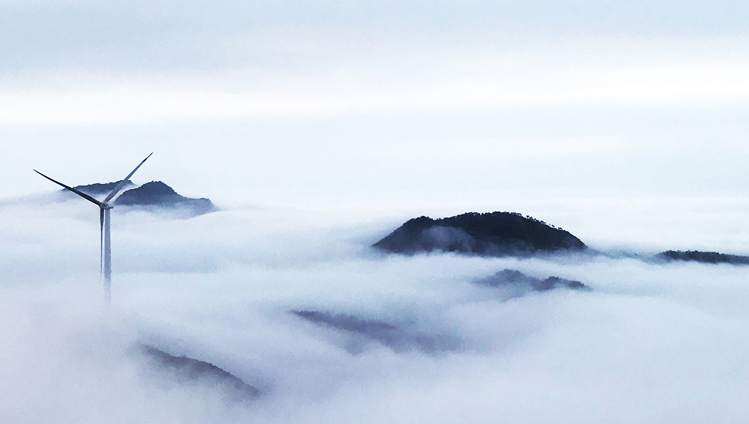
Wind power plants are considered to be clean and the electricity generated from them is regarded as an ideal complement to other energy sources. The share of wind power in the energy market is therefore increasing accordingly. By the end of 2019, wind power plants with an overall performance of around 650 gigawatts were installed worldwide. By way of comparison: 40 gigawatts would be enough to supply all German households with electricity. China has by far the largest wind market in the world with an installed capacity of well over 200 gigawatts.

The reliability of the wind power plants is crucial for the economic generation of electricity. They have to be able to sustain vibrations from operation and from the weather, withstand the salty sea air in off-shore operation and are easy to maintain in the event of a breakdown. In order to make optimum use of the wind and avoid overloading at high wind speeds, it is essential that the pitch – the angle of inclination of the rotor blades to the airflow – can be adjusted. Thanks to our drive belts, the patented and unique design of the wind power plants of the Chinese manufacturer Goldwind, works without transmission or hydraulics.
 |
Rolf Marwede manages our Dannenberg location, where the belts are manufactured for Goldwind:
"With our technological expertise, we can tailor our products to the individual needs of our customers. In this way, we have also developed the ideal solution for Goldwind." |
|
Timing belts instead of complex transmission
Goldwind is one of the few providers who use timing belts for the wing adjustment. “As a result, the system in the pod is less complex and less susceptible to vibrations and disturbances,” says Rolf Marwede, location manager in Dannenberg, Germany, where we produce the belts. "In addition, our belts are very low-wear and durable." They do not require oil for lubrication, need very little maintenance and are largely resistant to corrosion – a major advantage over metal constructions. "The simpler structure with drive belts is also more cost-effective and efficient in the long term," says Marwede. In the event of a failure, a quick replacement can easily be carried out, as only the belt is replaced rather than a complete transmission.
The best of two product groups
During the development phase, our engineers combined two tried-and-tested timing belt technologies. The Synchrodrive technology is based on the following: The belt is made of zinc coated steel cords, coated with particularly abrasion-resistant polyurethane for the teeth and the belt backing. The particular special weave, in turn, comes from Synchrochain technology. It reduces wear and noise and lends the timing belt a much more stable structure. This produces belts that are extremely resilient. They can survive around twelve million reverse bending stresses without incurring any damage during the course of a belt's life.
In order to meet the demand at Goldwind – in excess of 100 kilometers of drive belts annually – we invested around €2 million in 2018 in the Dannenberg location, which is a center of excellence for the production of polyurethane belts at Continental. Moreover, in addition to drive belts, we also supply mounting elements, foils that reduce wind resistance and hydraulic lines to the wind power plant manufacturer - thus ensuring that the turbines can operate at their optimum performance.